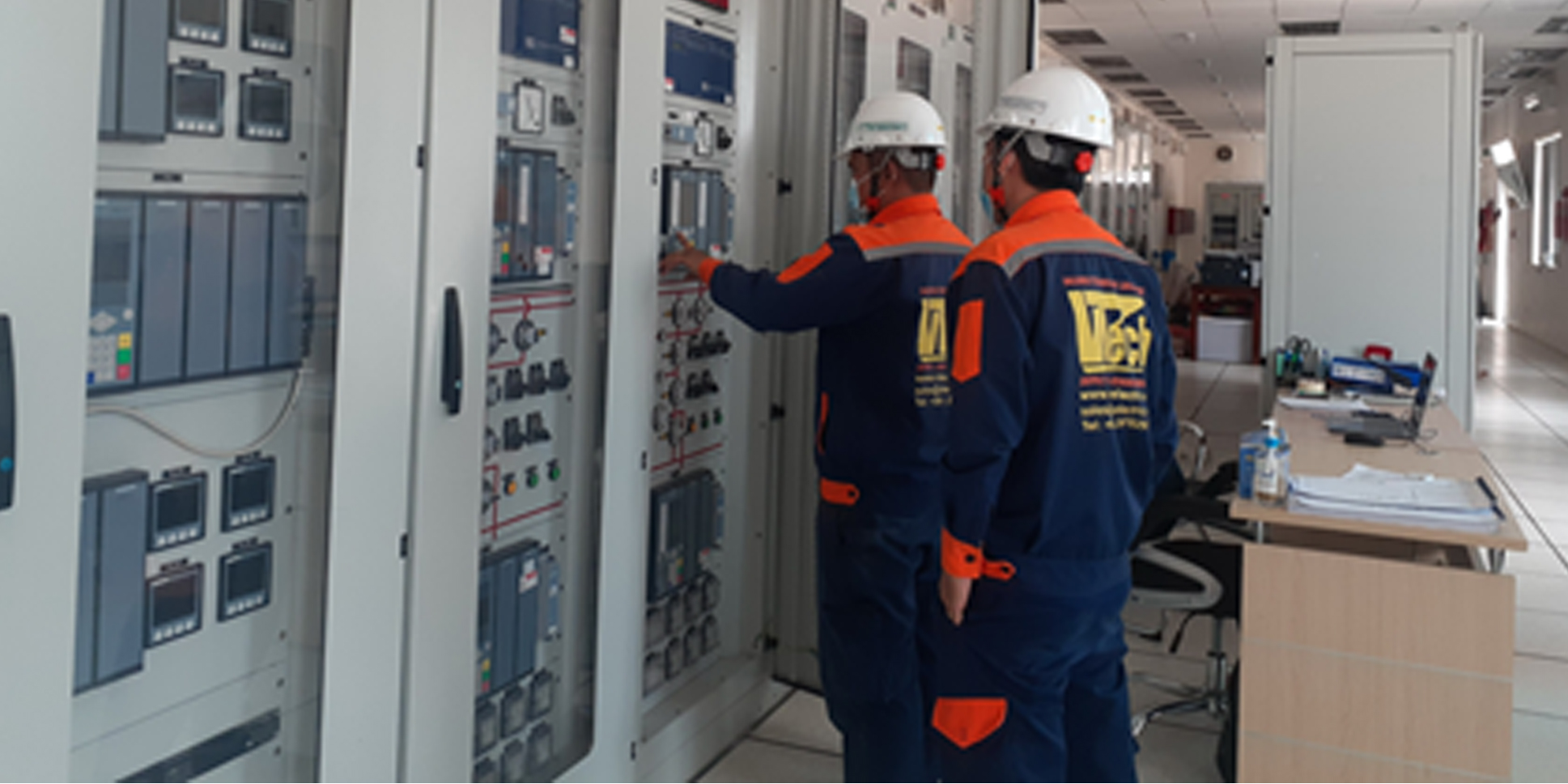DISTRIBUTED TEMPERATURE SENSING
The construction of the underground cable line requires high technical requirements, large investment, and operating costs. So how to prolong the life of the cable to helpfully exploit the initial investment capital to operate economically?
To protect valuable power cable infrastructure, high safety margins are often applied. These can limit the efficient use of your power cable infrastructure. AP Sensing is the Distributed Temperature Sensing (DTS) and Distributed Acoustic Sensing (DAS) solution provider for your power grid. Our power cable monitoring solution balances the need for asset protection and network performance optimization.
Distributed temperature sensors use fiber optic as the sensor. A light pulse is sent into the fiber, with a defined pulse wavelength and width. While light rays travel along with the fiber, the light rays are scattered in all directions due to different physical interactions with the fiber itself. Some of the scattered light rays run backward along with the optical fiber toward the source, called back radiation.
A distributed temperature sensor (DTS) is applied to continuously monitor the temperature of the underground cable. The DTS measurement principle must be based on the response time of the Raman scattering signal to a laser pulse diode whose optical output must be <50mW. In order to ensure stable measurements over a long period of time, the DTS must measure the temperature with absolute precision even under the changing conditions of strain that may occur during cable installation and operation.
AP Sensing's Distributed Fiber-Optic Solutions (DFOS) for temperature and acoustic measurements, together with our proven RTTR/DCR engine and unique SmartVision™ asset visualization and data management software, give you the ideal solution to monitor and protect your power infrastructure. DTS provides continuous monitoring of high-power cable temperatures, detecting hotspots, delivering operational status, condition assessment and power circuit rating data (Real Time Thermal Rating - RTTR/ Dynamic Cable Rating - DCR). For sea cables, the RTTR engine computes the burial depth of the cable (DoB). DAS offers accurate cable fault detection and location as well as TPI (third-party interference) protection both on land (digging and drilling) and subsea (anchor drops and drags). This helps you optimize transmission and distribution networks, while reducing operational costs.
APSENSING SOLUTION
Preference will be given to the DTS of longer design service life and warranty service life. DTS operation shall be based on a real-time operating system (RTOS) designed for the use in embedded systems and safety critical applications. Windows or Linux derivatives are not acceptable. The DTS instrument shall be designed to work trouble-free/reliable in environments where the temperature could rise to 60oC or drop to -10°C. For enhanced system reliability, the DTS instrument itself shall reliably perform alarming functions based on
- Temperature maximum (absolute hotspot),
- Local maximum (development of local hotspots) and
- Temperature gradients (rate of rise)

without a connected server PC. These DTS instrument alarms shall be handed over via internal relays and/or an embedded Ethernet interface. The DTS instrument shall be capable to measure simultaneously two measurement traces with different measurement time and/or measure sequentially multiple measurement traces with different range, spatial resolution and measurement time without manual reconfiguration. The DTS instrument shall provide a secure web-interface for easy and reliable maintenance and configuration. Regular service prompts shall be visualized on the front display of DTS.
1. Features:
· Raman OTDR DTS Instrument
· Optimized for standard 50/125 MM Multimode fiber (OM2/OM3/OM4)
· Or optimized for standard 9/125 µm Single Mode fiber, no special fiber requirement.
· Real Time Operating System RTOS (e.g. QNX, VxWorks, PikeOS) no Windows, no Linux
· Up to 24 integrated channels - no external switch or plug in module
· 2000 alarm zones per channel
· Laser Class 1M – max. optical output power <50mW (averaged)
· 512 MB internal storage; extendable via USB HDD/SSD
· SD/SDHC Card Slot
· DTS Instrument integrated interfaces:
o 2 x Ethernet ports (LAN 10/100/1000), galvanic separated
o USB A and USB B
· Relay Outputs (a minimum of 10) (System Error, Fiber Break, Temp Alarm & Prealarm)
o 4 volt-free Inputs
o Highly integrated, compact 19” design max. 2 HU (Height Units)
· Operating Temperature Range -10°C to +60 °C
· 24VDC Power Supply / typ. <25W
- Application Software
- Application software shall be providing circuit setup and corresponding temperature distribution, temperature profiles and hot-spots. The application software shall be based on Microsoft SQL database and shall work as a server to enable remote connection with dedicated client software.
- The application software shall provide a GUI to easily overview temperature and the respective location in the real environment (i.e. satellite map) and the status of temperature & alarms.
- The application software shall be capable to generate a temperature trace matching the exact power cable length (excluding feed and transit cables) and GIS markings (Geographical Information System).
- Actual and historical (means daily, weekly, monthly, and annually) data of hot spots or other point of interests (POI) like temperature of joints shall be displayed along with respective load in A or MVA showing trend curves of critical points. Trend analysis shall be exported in MS Excel compatible formats. Application software shall be capable to configure alarm thresholds to detect reliably local hot spots under the condition of transient (dynamic) loads by analysing and correlating temperature trends.
- Application software shall integrate multiple DTS instruments in one platform
Real Time Thermal Rating (RTTR) software shall be offered to provide a predictive model for cable loading using real-time algorithms based on IEC 60287/60853 as well as FE models and automatically steady-state, dynamic cable ratings and emergency overloading. RTTR data shall be available on the GUI of the corresponding DTS system management software as well as on the local SCADA system.

 V.T.E.C.H ELECTRICAL TECHNOLOGY CO., LTD
V.T.E.C.H ELECTRICAL TECHNOLOGY CO., LTD















